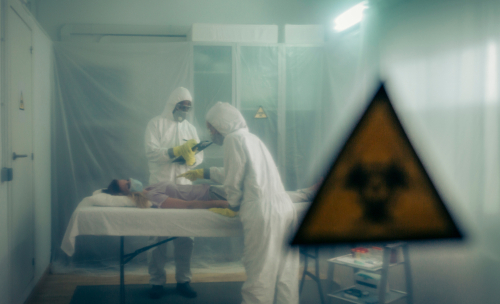
In a groundbreaking yet deeply concerning scientific endeavor, a team of researchers in China has engineered a mutant coronavirus strain with a staggering 100% fatality rate in mice. This new pathogen is specifically designed to attack brain cells, raising fears about the potential for human spillover and the implications it could have on global health security.
The study, which was released as a preprint on January 3rd, involved the use of a variant of the pangolin coronavirus. The virus was introduced to a group of transgenic mice that express the human ACE2 receptor, making them susceptible to the same viruses that can infect humans. The results were nothing short of alarming, as all infected mice succumbed to the disease within just 7-8 days post-inoculation.
🚨🇨🇳 NEW DEADLY CHINESE COVID-19 STRAIN
Chinese lab crafts mutant COVID-19 strain with 100% kill streak in ‘humanized’ mice: ‘Surprisingly’ rapid death
The deadly virus known as GX-P2V attacked the brains of mice that were engineered to reflect a genetic makeup similar to that… pic.twitter.com/Q16nfOietS
— Mario Nawfal (@MarioNawfal) January 17, 2024
Notably, the virus demonstrated an ability to infiltrate critical organs, including the brain, eyes, and lungs. Infected mice exhibited rapid weight loss and other severe symptoms such as sluggishness and the appearance of white eyes. By the sixth day, while the viral load in the lungs had decreased, the viral RNA loads and viral titers in the brain samples had increased significantly, indicating that a severe brain infection was the primary cause of death.
This research has not gone unnoticed by the international community, as it echoes concerns about the safety and ethics of such high-stakes virology studies. The potential for accidental release or misuse of such pathogens poses a grave risk to public health, reminiscent of the contentious debate surrounding the origins of COVID-19 and the lab-leak hypothesis.
A Century of Crimes and Globe Crisis by the Chinese Communist Party
-Uyghur Genocide
-Unleashing the Virus
-Deadly Vaccines
-Illegal Military Installations
-Fentanyl Crisis
-Social Media Control and Indoctrination
-Financial Crisis
-Spying and Espionage
-Tiananmen, Hong Kong,… pic.twitter.com/tF360ekULn— NFSC Speaks (@NFSCSpeak) December 25, 2023
In related news, a report from a Select Subcommittee on the Coronavirus Pandemic has brought to light a coordinated effort to suppress scientific discourse on the lab-leak theory. This includes implicating high-profile figures who initially dismissed the possibility that the virus could have originated from a laboratory setting.
Meanwhile, similar experiments are being conducted elsewhere, with scientists at Boston University creating a deadly COVID strain with an 80% death rate in 2022. These experiments were notably conducted under Biosafety Level-3 protocols rather than the more stringent Level-4, sparking outrage and concern over the potential for human infection and transmission.
The discovery of an illegal bio lab in Fresno County, California, further underscores the risks associated with biocontainment and the management of infectious agents. The lab housed over 900 mice genetically engineered to carry the COVID-19 virus, along with other potentially infectious bacterial and viral agents.
As we grapple with these developments, it is imperative that we scrutinize the balance between scientific advancement and the safeguarding of public health. The creation of such lethal pathogens in a laboratory setting must be regulated with the utmost caution to prevent any possibility of a future pandemic that could arise from a man-made catastrophe.












